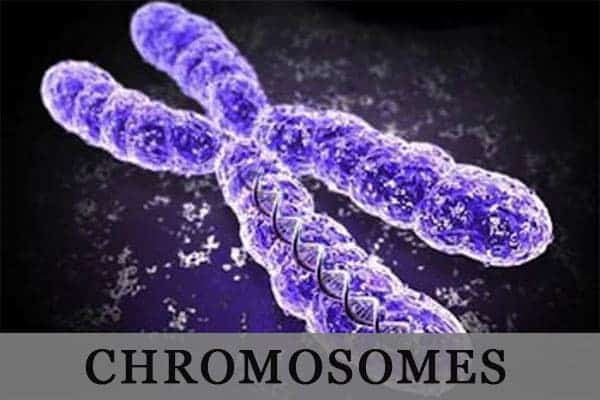
Chromosomes are the building block of all life. A chromosome basically carries all of the vital information needed for our bodies to grow cells, reproduce, and survive. Chromosomes contain DNA as well as some regulatory proteins. They are normally found in the nuclei of cells. [1]
There are 46 chromosomes in the human body or about 23 pairs of chromosomes. In the case of other organisms such as small peas, there are 12 chromosomes. Dogs have 78 chromosomes. This number is not related to the complexity, size, or intelligence of a particular species. [2]
Females have two X chromosomes in their cells, while males have one X and one Y chromosome. Scientists count individual strands of chromosomes. Chromosomes are made up of DNA.
The sex chromosomes are the X chromosome and the Y chromosome. Chromatin is the unit of measurement for chromosomes. Chromatin count helps display the structure of chromosomes but isn’t unique to any particular type of chromosome.
The vast majority of chromosomal abnormalities involve the sex chromosomes XX and XY—much more so than other types of autosomal abnormalities. Entire commercial industries are based on genetics and the evolution of these changes. Sex chromosome abnormalities are gender specific. XX chromosomes are markers for females, and XY chromosomes are markers for men. Most of what researchers know about chromosomes was learned by observing chromosomes during cell division and differentiation.
It’s crucial that our reproductive ancestor cells (eggs and sperm haploids) contain the exact number of chromosomes and that these chromosomes have the proper construction. [3] Haploid cells are created via meiosis, which is the opposite of mitosis. Chromosomal disorders are currently not treatable using stem cells and require gene therapies.
Chromosomes are thread-like structures located inside the nucleus of animal and plant cells. They are made of protein and a single molecule of deoxyribonucleic acid (DNA). DNA contains the specific instructions that make each type of living creature unique.
Chromosomes can be visualized under a microscope, especially during cell division when they’re most condensed. The process typically involves staining the chromosomes to produce a pattern of dark and light bands. The resulting display is a karyotype, which can be analyzed to identify specific chromosomal abnormalities.
In summary, chromosomes are crucial in genetics, inheritance, and cellular function. They house our genes and ensure the proper distribution of genetic information during cell division.
[1] ^ Y. Pirson, Recent advances in the clinical management of autosomal-dominant polycystic kidney disease, QJM: An International Journal of Medicine, Volume 89, Issue 11, November 1996, Pages 803–806, https://doi.org/10.1093/qjmed/89.11.803
[2] ^ W. Reardon, C.F. O Mahoney, R. Trembath, H. Jan, P.D. Phelps, Enlarged vestibular aqueduct: a radiological marker of Pendred syndrome, and mutation of the PDS gene, QJM: An International Journal of Medicine, Volume 93, Issue 2, February 2000, Pages 99–104, https://doi.org/10.1093/qjmed/93.2.99
[3] ^ W.D. FOULKES, A tale of four syndromes: familial adenomatous polyposis, Gardner syndrome, attenuated APC and Turcot syndrome, QJM: An International Journal of Medicine, Volume 88, Issue 12, December 1995, Pages 853–863, https://doi.org/10.1093/oxfordjournals.qjmed.a069018
If you've seen people take ice baths or cold showers and wondered if they're onto… Read More
Immunomodulation stands at the forefront of biomedical research, steering the immune system's ability to fight… Read More
Stem cell research leads the charge in medical innovation, heralding revolutionary advances in regenerative medicine.… Read More
The blood-brain barrier (BBB) is a crucial shield for the brain, regulating the entry of… Read More
While peptide bonds are fundamental to protein structure, their direct relationship with stem cells lies… Read More
When discussing cutting-edge cancer treatments, NK cell therapy stands out due to its unique approach… Read More